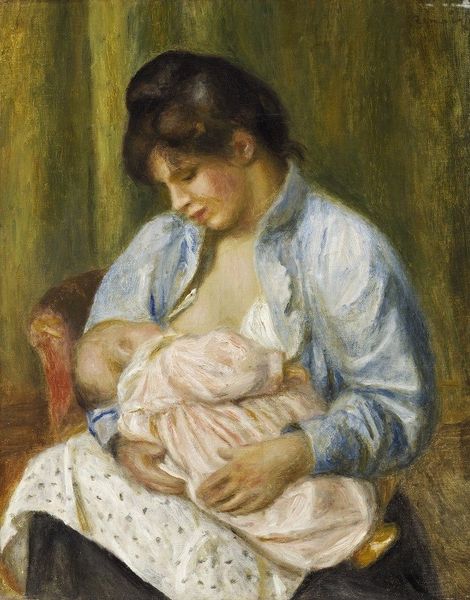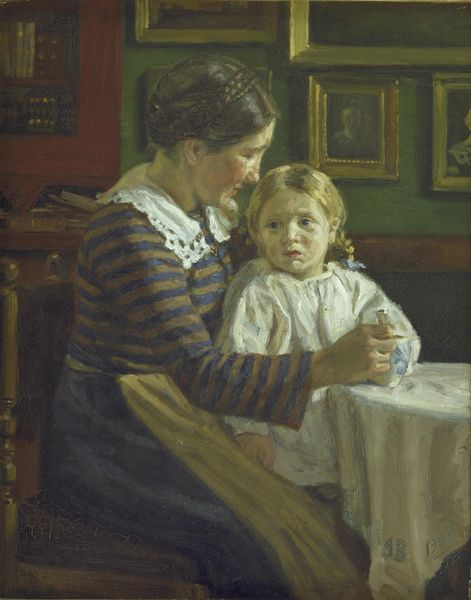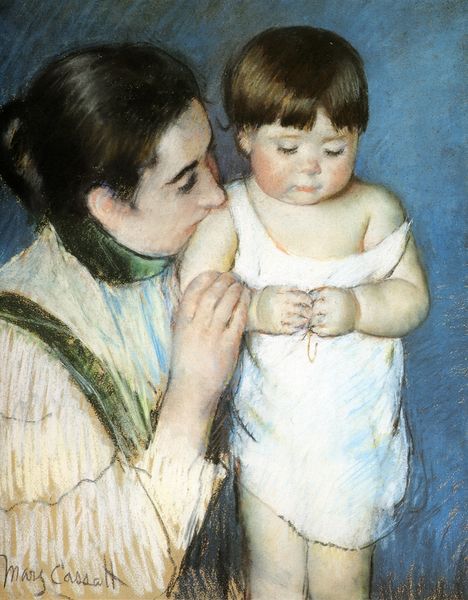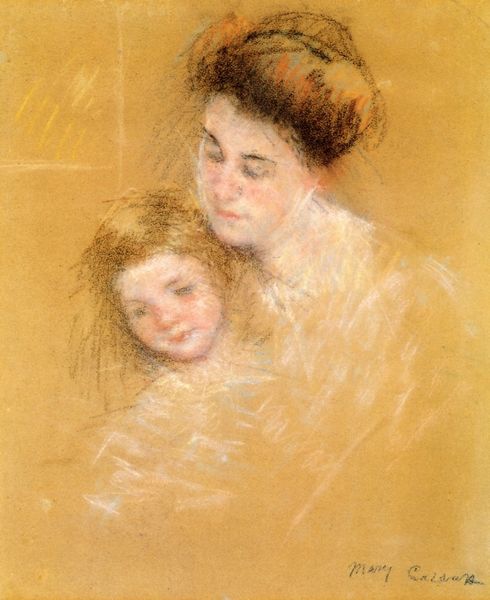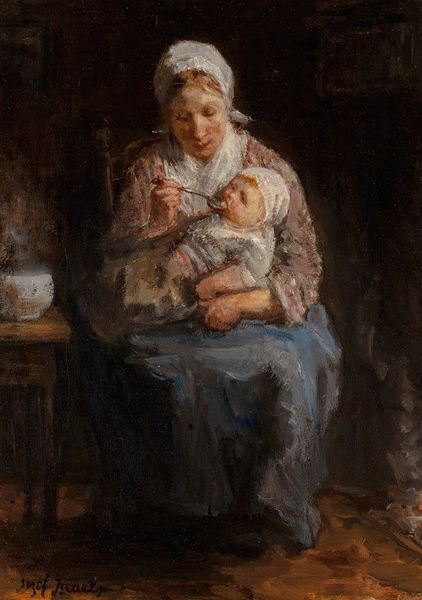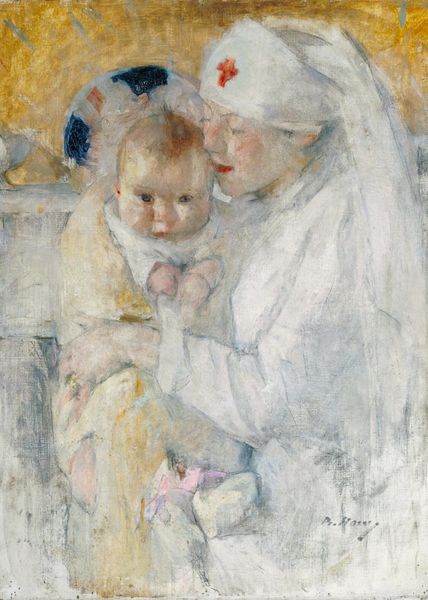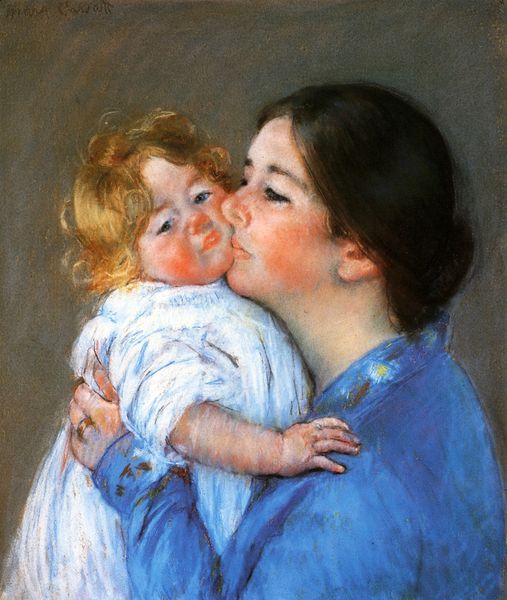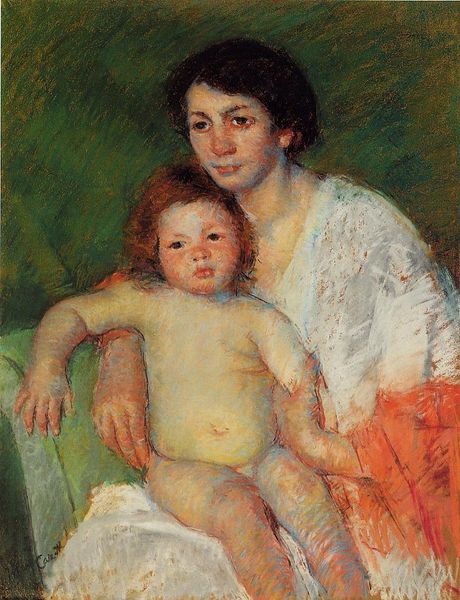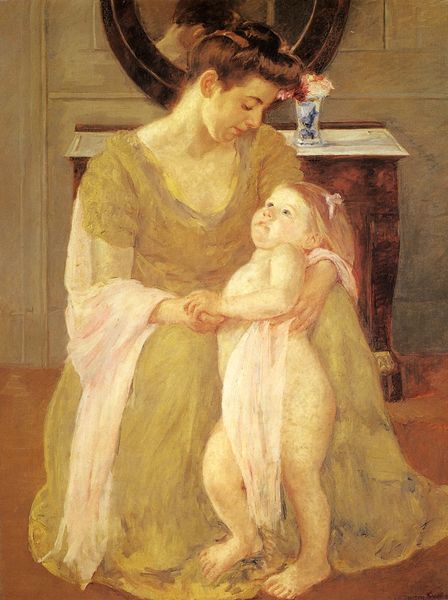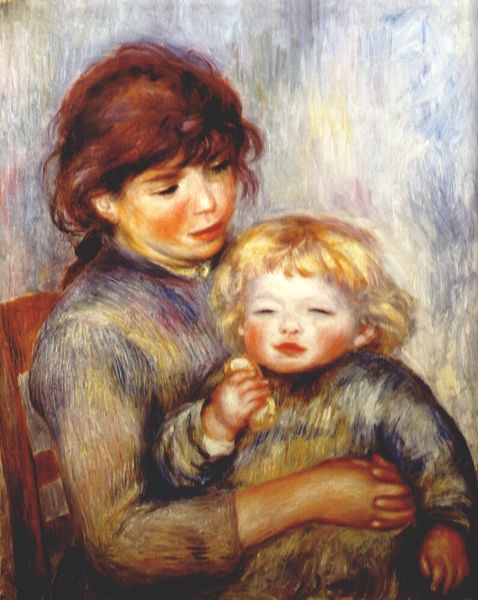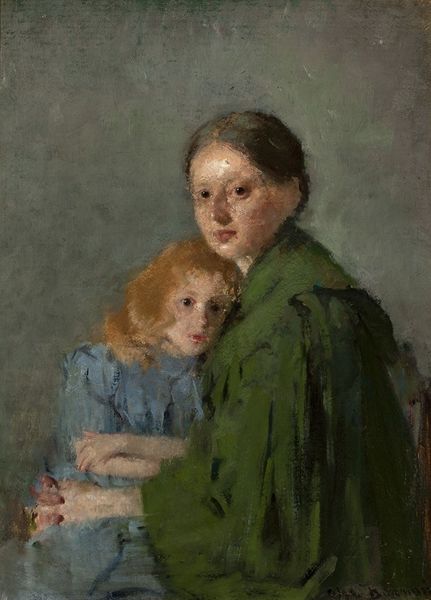
Copyright: Public Domain: Artvee
Editor: Here we have Renoir's "Gabrielle and Jean," painted around 1895. It's an oil painting, portraying a woman and child at play. There’s something incredibly soft and intimate about it, mostly because of the rounded brushstrokes. What strikes you most when you look at this piece? Curator: Primarily, I observe Renoir's manipulation of form and color. The composition itself adheres to a somewhat classical pyramidal structure, grounding the figures. Note how the brushstrokes blend colors rather than sharply defining contours, which achieves that very softness you mentioned, dissolving the distinction between figure and ground. The figures seem almost to emanate from their surroundings, yet the composition is stable. Is this pictorial strategy an accident? Editor: Not at all, it appears very intentional. But, why blend these two, figure and background, which may confuse some viewers expecting classical order? Curator: Perhaps to suggest a harmony, a merging of subject and environment, reflecting the comfort and familiarity within this domestic scene. It's also important to note the textures; the juxtaposition of the smooth skin of the subjects against the textured brushwork of the background creates a tactile quality. And if we closely analyze the treatment of light, we observe that it is less about direct illumination, but more about atmospheric diffusion and creating soft tonal shifts. Note how light interacts with the folds of their clothing, almost blurring those lines. Editor: I see how Renoir's technique and treatment of color, texture and light emphasizes an overarching intimate feeling of daily life within his compositions. It seems I had only scratched the surface. Curator: Indeed, by examining the intrinsic elements of painting we may find greater understanding.
Comments
No comments
Be the first to comment and join the conversation on the ultimate creative platform.

